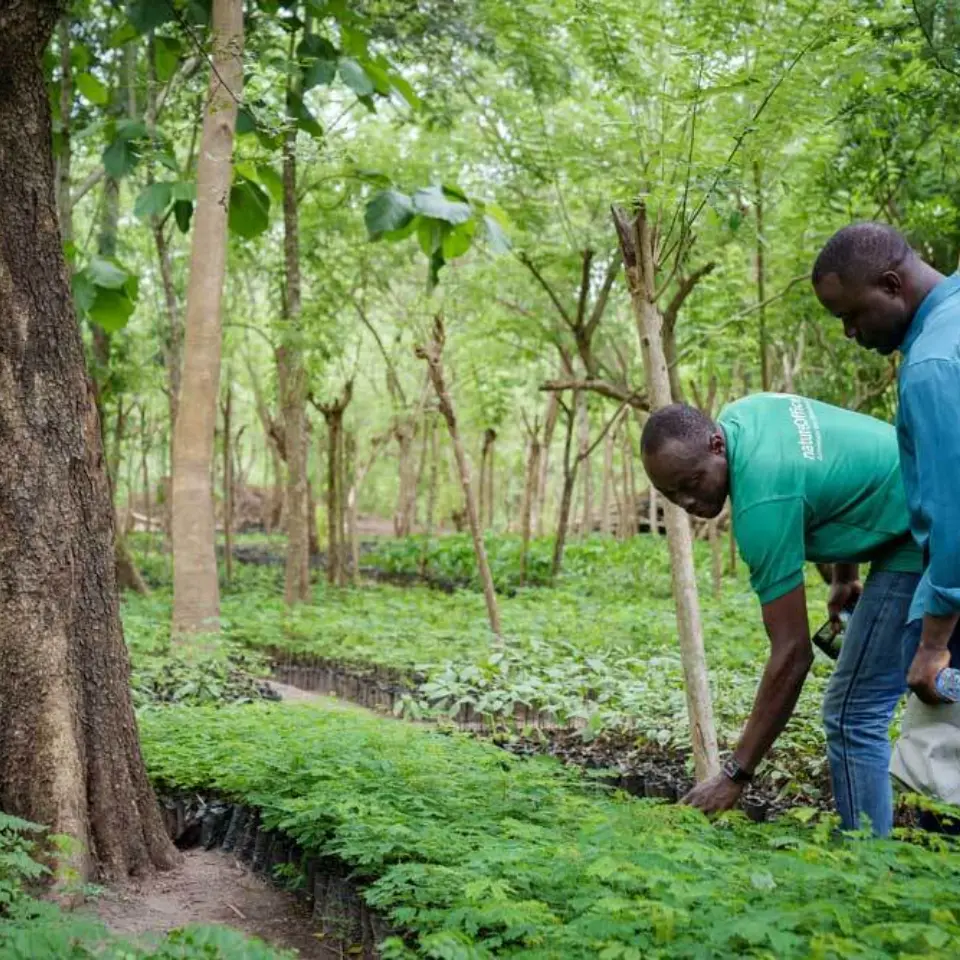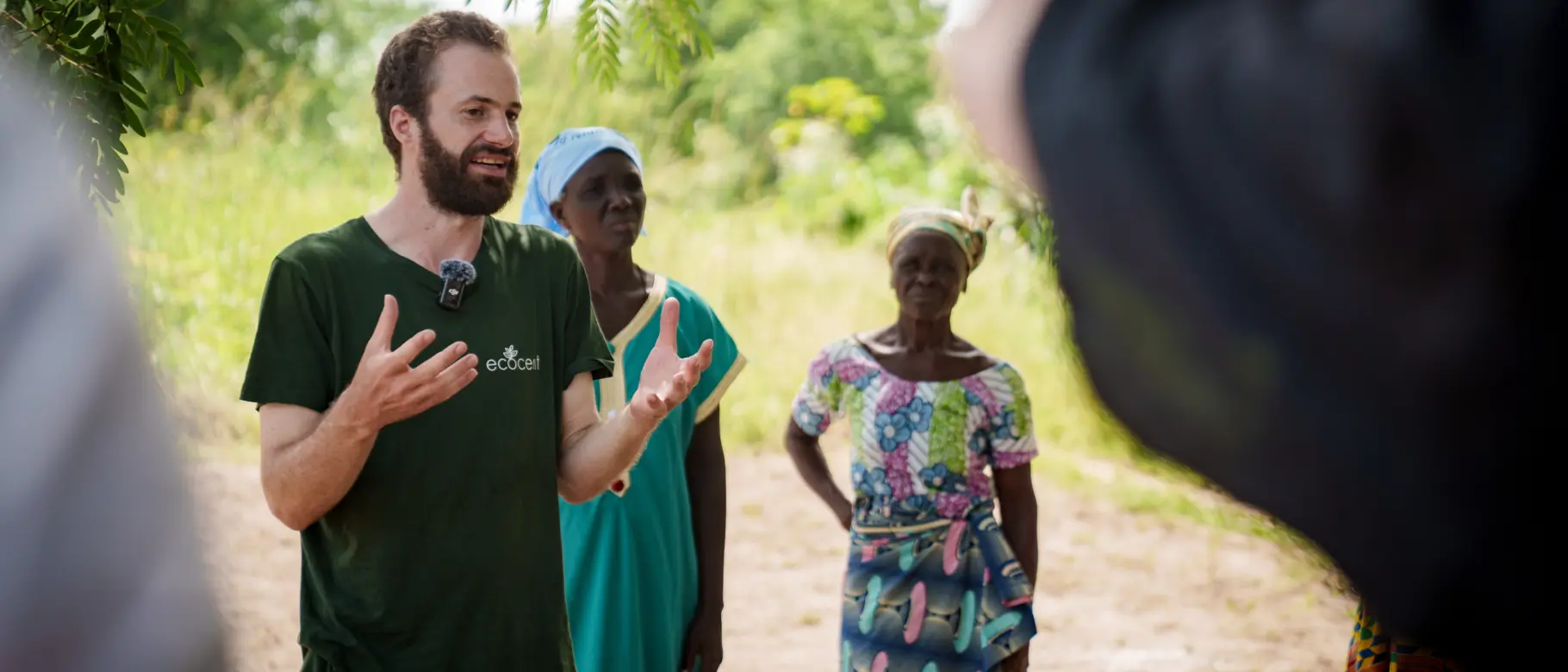
Reforestation & social issues - Togo
PROJECT TOGO
Planting trees, building schools. In Togo, we do both at the same time. Because climate protection works best with people.

For what comes after, the SBTi also recommends supporting strong projects worldwide and balancing the CO₂ emissions that can’t be avoided.
Climate change is the greatest challenge of our time - with global, long-term and often irreversible effects. It affects not only the climate, but also social, economic and ecological systems worldwide. No company, no person is left out. That's why we need clear strategies - and real solutions.
| Environmental consequences | Social consequences | Economic consequences |
|---|---|---|
| Glacier melt, sea level rise, | Increased risk of poverty, migration, health risks | Crop failures, disrupted supply chains, insured losses |
| Extreme weather, biodiversity loss, and species extinction | Educational deficits caused by crises, strain on public systems | Price increases for raw materials, incalculable production risks |
| Ecosystems collapse, desertification | Vulnerable groups are being further weakened |
Climate protection is not a monotonous one-size-fits-all block. There are many levers and climate project ideas - each with different approaches in different areas.
Forests store CO₂. They are climate savers and habitats in one. Protecting forests means slowing down climate change and preserving biodiversity.
Solar, wind and hydropower replace coal and oil. Effectively stopping climate change is only possible with the energy transition. CO₂-neutral, sustainable and efficient.
Sustainable transportation reduces emissions in conurbations. Climate protection projects focus on e-mobility, public transport or traffic avoidance through digitalization.
Capturing CO₂ from industrial processes and storing it safely. Complex, expensive, but potentially indispensable for emissions that are difficult to avoid.
Desert landscapes are spreading - technical term desertification. Climate protection projects save soils from drying out, secure water and prevent migration. Examples? Well construction in drought areas and smart irrigation systems.
Seagrass meadows store CO₂ - ten times as much as forests. The designation of protected zones and maritime reforestation are the means of choice - for clean oceans and clean air.
Climate protection does not end at national borders - that is why international guidelines and measurable targets are needed. This is precisely where the Sustainable Development Goals (SDGs) come in. The 17 global sustainability goals were adopted by the United Nations and form the framework for socially just and ecologically sustainable development worldwide. They range from poverty reduction and access to clean water to high-quality education and consistent climate protection.
Many climate protection projects make multiple contributions to achieving these goals - thanks in part to globally recognized certification and process standards :
At natureOffice, we stand for effective, credible climate protection. Consulting, balancing, implementation: everything from a single source. Our values: We believe in cooperation instead of greenwashing. In impact instead of symbolism. In trust through transparency. And in sustainable change that starts locally - but has a global impact.

Climate change is leading to extreme weather events, rising sea levels, dwindling biodiversity, social upheaval and economic risks. Regions with already weak infrastructure are suffering in particular. Companies are also coming under increasing pressure: due to a shortage of raw materials, insurance risks, regulatory laws and social and political expectations.
Companies can:
natureOffice supports companies in all these steps - with advice, software and specific climate protection projects.
Link to the offsetting page here.
Projects can be differentiated thematically:
And geographically:
Projects generate CO₂ savings or bindings. These are certified and can then be traded as CO₂ certificates. Buyers can purchase and retire them - their emissions are then considered offset. Important: Only certified and retired certificates are considered effective CO2 offsetting.
Prices vary depending on the type of project, region, standard and demand. Simple projects with ancillary financing (e.g. hydropower) often cost less. Complex projects without additional financing (e.g. reforestation in Africa) are more expensive. Range: between approx. 5 and 40+ euros per ton of CO₂.
No. Anyone who offsets transparently, relies on certified projects with a real impact and at the same time actively reduces emissions is acting responsibly. Greenwashing begins where offsetting serves as a distraction or justification. natureOffice stands for credible offsetting as part of a holistic climate strategy.